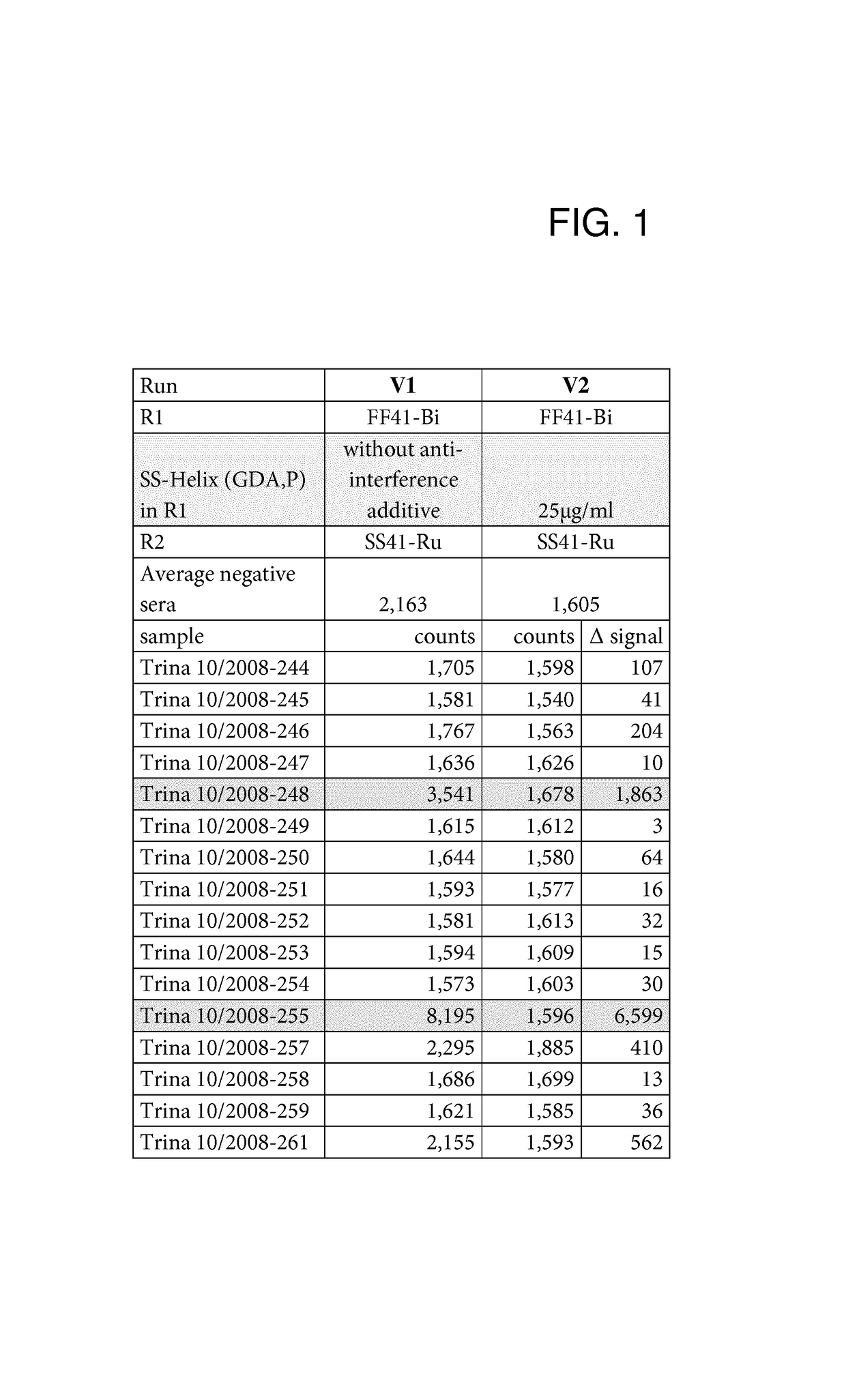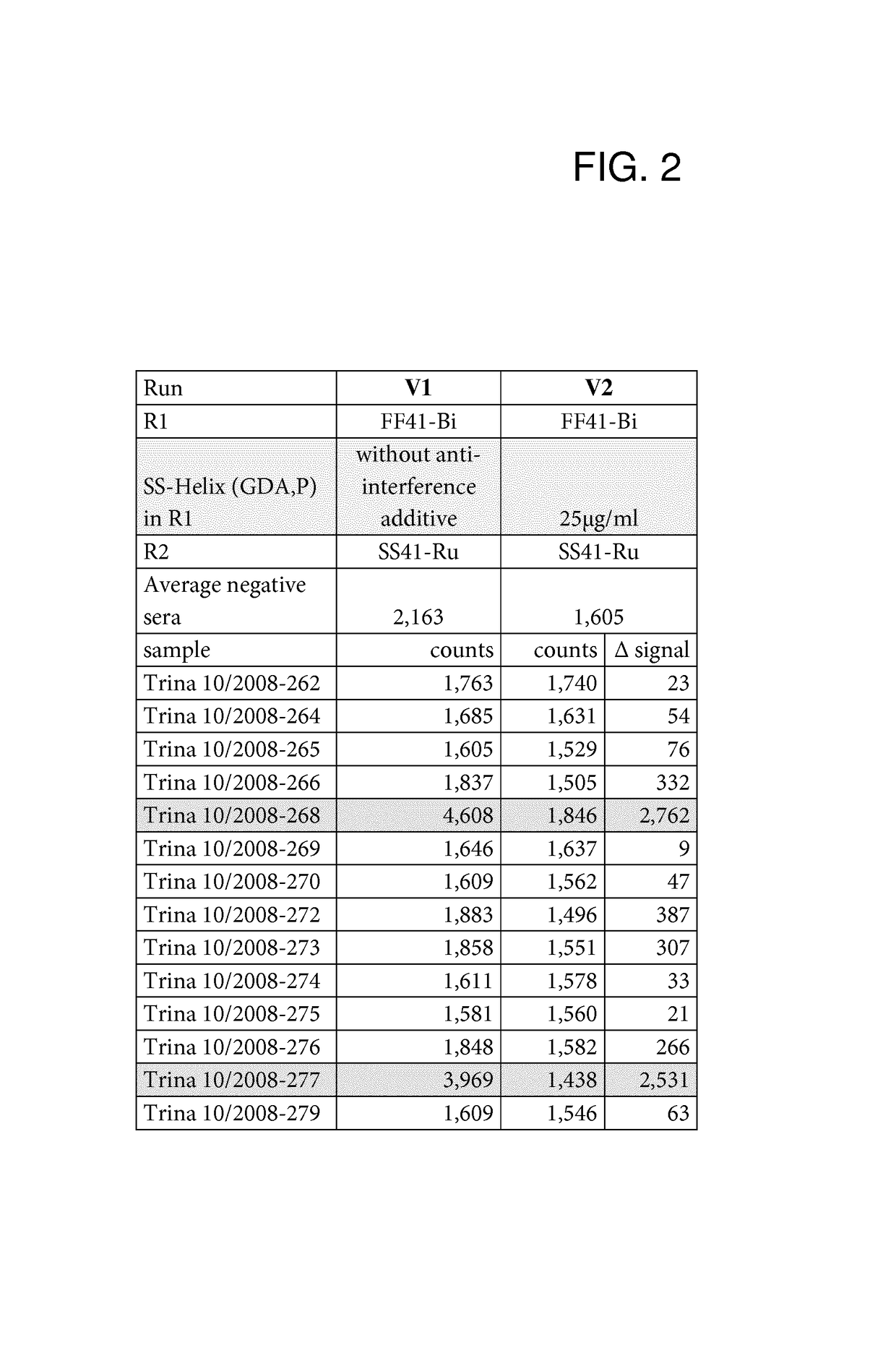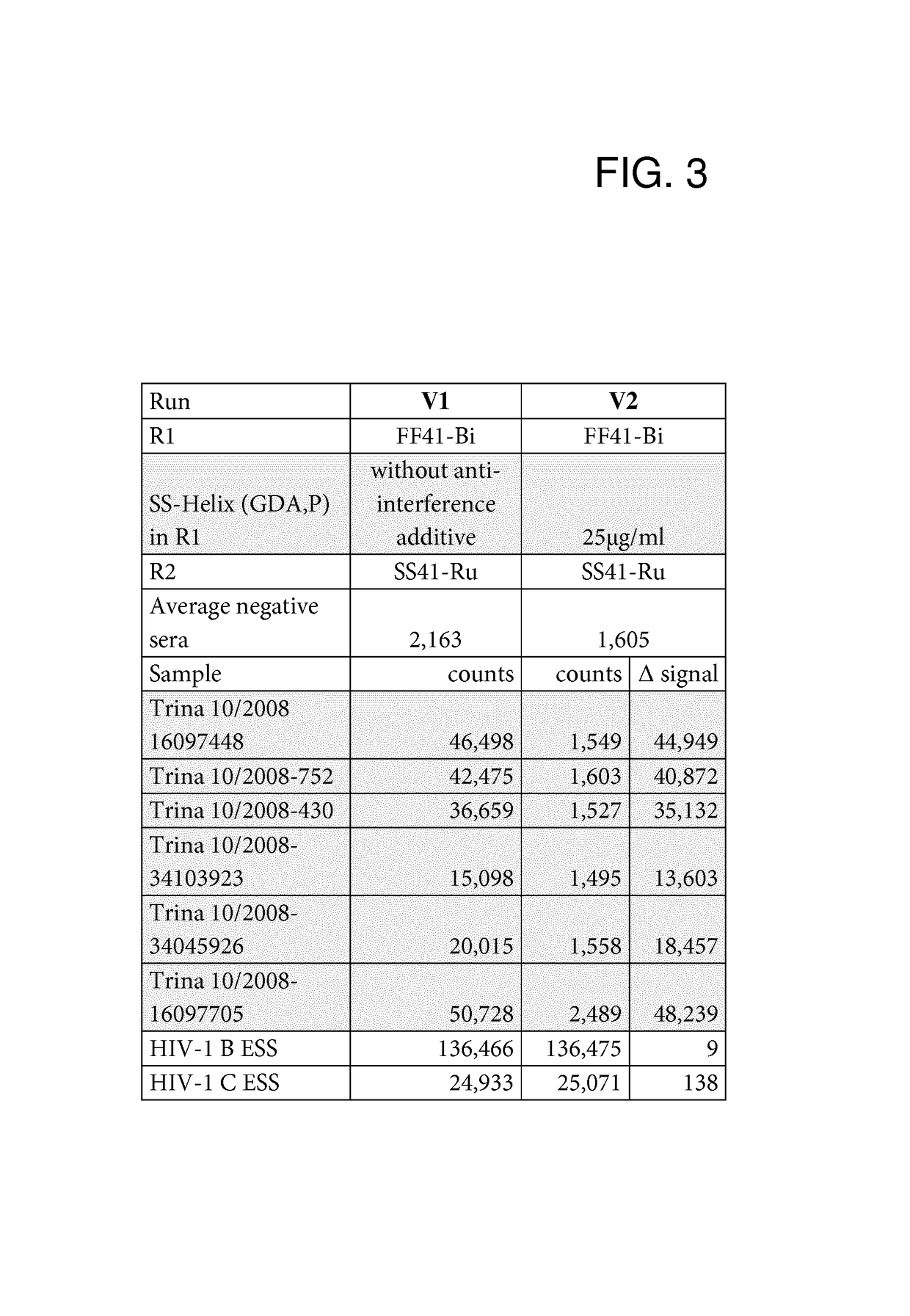Chaperone-chaperone fusion polypeptides for reduction of interference and stabilization of immunoassays
a fusion polypeptide and interference reduction technology, applied in the field of fusion polypeptides, can solve the problems of inability to completely reproduce the chemical polymerization process, the disadvantage of chemically polymerized proteins, and the possibility that human serum samples may turn out false positive in immunoassays, so as to reduce interference, reduce false positive results, and increase the solubility of proteinaceous ingredients
- Summary
- Abstract
- Description
- Claims
- Application Information
AI Technical Summary
Benefits of technology
Problems solved by technology
Method used
Image
Examples
example 1
re of Fusion Polypeptides
[0064]Cloning and Purification of Skp / SlyD Chaperone Fusion Polypeptides
[0065]Cloning of Expression Cassettes
[0066]In order to generate a suitable expression construct, an expression cassette encoding EcSkp-EcSlyD-EcSlyD was ligated into expression plasmid pQE80L (Qiagen, Hilden, Germany) by a two-step cloning strategy.
[0067]The sequence of the E. coli Skp (EcSkp) was retrieved from the SwissProt database (SwissProt ID P0AEU7). In a first step, a synthetic gene comprising the Shine-Dalgarno sequence from expression vector pQE80L, the coding sequence of the mature Skp chaperone amino acids 21-161 (the signal peptide spanning amino acid residues 1-20 were omitted, the ATG start codon (methionine) was added in frame), with a part of a glycine-rich linker region as well as suitable recognition sites for restriction endonucleases EcoRI (5′ end) and BamHI (3′ end), was purchased from Sloning (Vaterstetten, Germany). The synthetic 489 bp DNA fragment was hydrolyzed...
example 2
[0081]Spectroscopic Measurements
[0082]Protein concentration measurements were performed with an Uvikon XL double-beam spectrophotometer. The molar extinction coefficients (ε280) were determined by using the procedure described by Pace (1995), Protein Sci. 4, 2411-2423. For EcSkp-EcSlyD-EcSlyD, a molar extinction coefficient (εM280) of 13410 M−1 cm−1 was used, for EcSkp-EcSlyD a molar extinction coefficient (εM280) of 7450 M−1 cm−1 was used. For EcSkp-EcSlpA-EcSlpA, a molar extinction coefficient (εM280) of 4470 M−1 cm−1 was used. For the repetitive E. coli SlyD constructs, SlyD, SlyD-SlyD, SlyD-SlyD-SlyD, SlyD-SlyD-SlyD-SlyD and SlyD-SlyD-SlyD-SlyD-SlyD, molar extinction coefficients of 5960 M−1 cm−1, 11920 M−1 cm−1, 17880 M−1 cm−1, 23840 M−1 cm−1 and 29800 M−1 cm−1 were used.
example 3
[0083]Anti-Interference Activity of the SlyD Polypeptide Fusion Proteins
[0084]The anti-interference activity of the SlyD polypeptide fusion proteins was assessed in an automated Elecsys® 2010 analyzer (Roche Diagnostics GmbH). Elecsys® is a registered trademark of the Roche group. Measurements were carried out in the double antigen sandwich format.
[0085]Signal detection in Elecsys® 2010 is based on electrochemoluminescence. The biotin-conjugate (i.e. the capture-antigen) is immobilized on the surface of a streptavidin coated magnetic bead whereas the detection-antigen bears a complexed Ruthenium cation (switching between the redox states 2+ and 3+) as the signaling moiety. In the presence of a specific immunoglobulin analyte, the chromogenic ruthenium complex is bridged to the solid phase and emits light at 620 nm after excitation at a platinum electrode. The signal output is in arbitrary light units.
[0086]The recombinant anti-interference SlyD polypeptides were assessed in a double...
PUM
| Property | Measurement | Unit |
|---|---|---|
| detection wavelength | aaaaa | aaaaa |
| solubility | aaaaa | aaaaa |
| pH | aaaaa | aaaaa |
Abstract
Description
Claims
Application Information
 Login to View More
Login to View More - R&D
- Intellectual Property
- Life Sciences
- Materials
- Tech Scout
- Unparalleled Data Quality
- Higher Quality Content
- 60% Fewer Hallucinations
Browse by: Latest US Patents, China's latest patents, Technical Efficacy Thesaurus, Application Domain, Technology Topic, Popular Technical Reports.
© 2025 PatSnap. All rights reserved.Legal|Privacy policy|Modern Slavery Act Transparency Statement|Sitemap|About US| Contact US: help@patsnap.com



